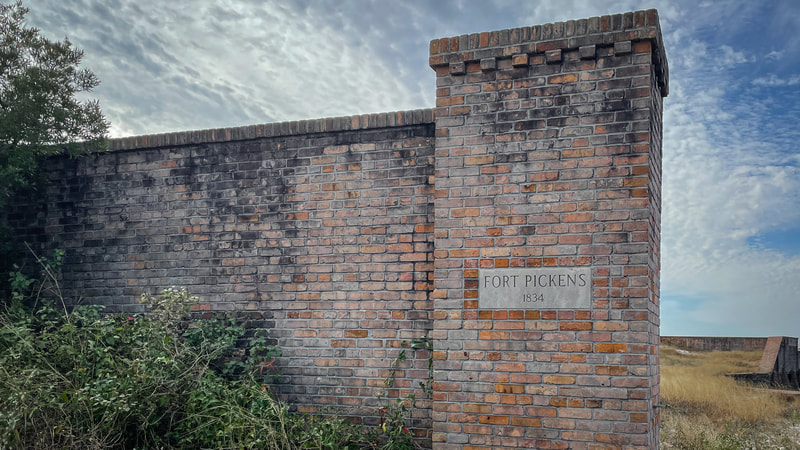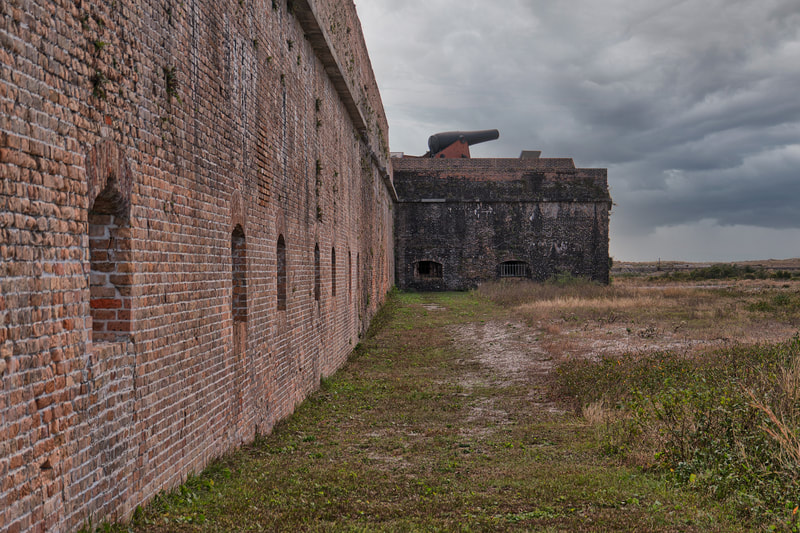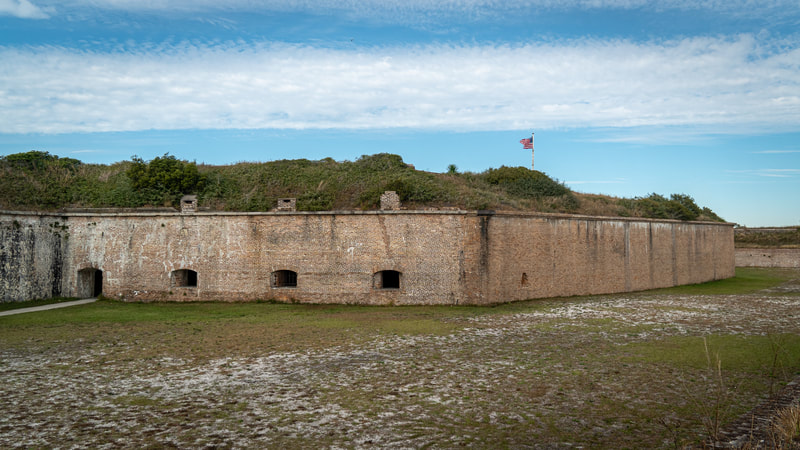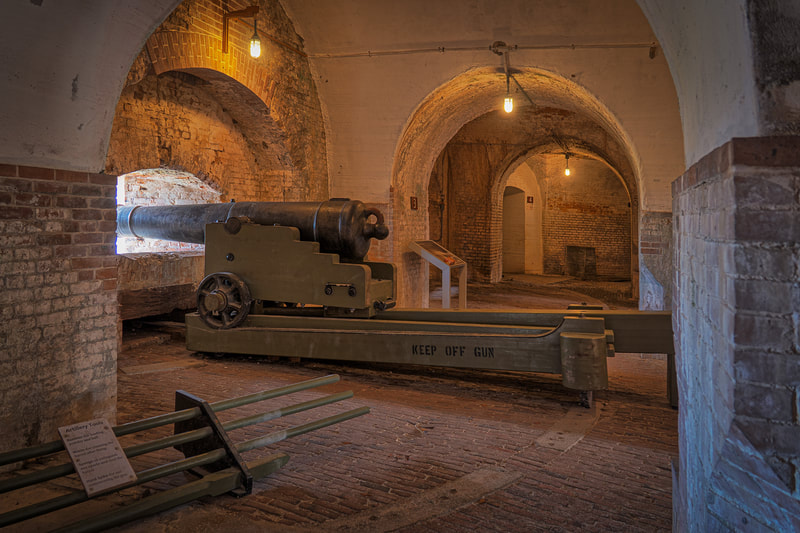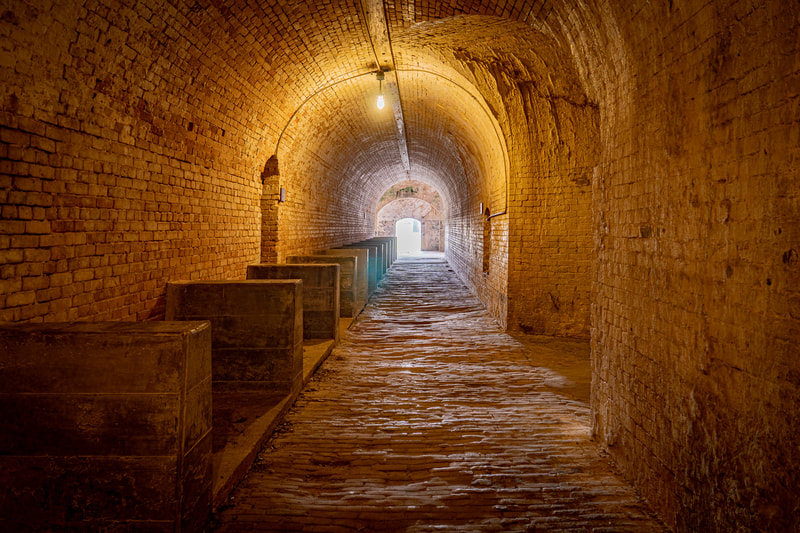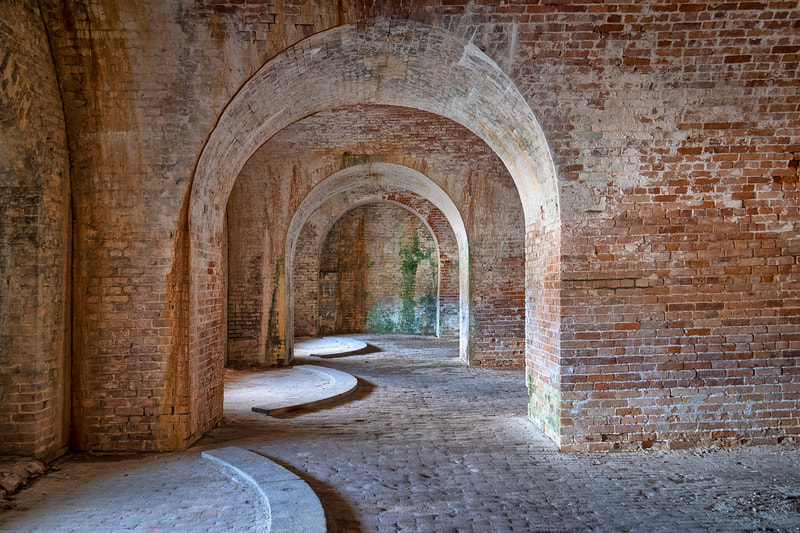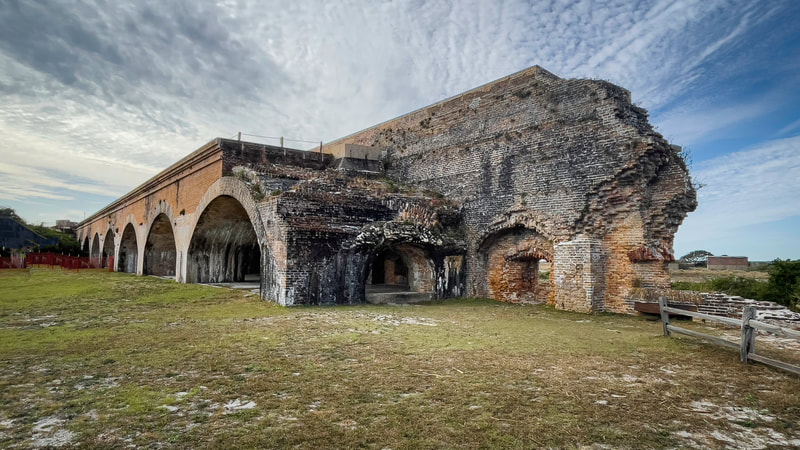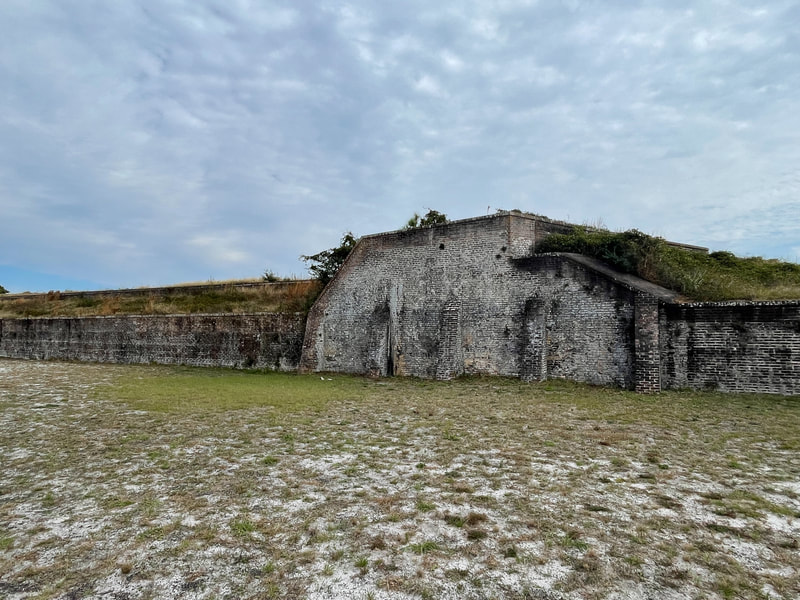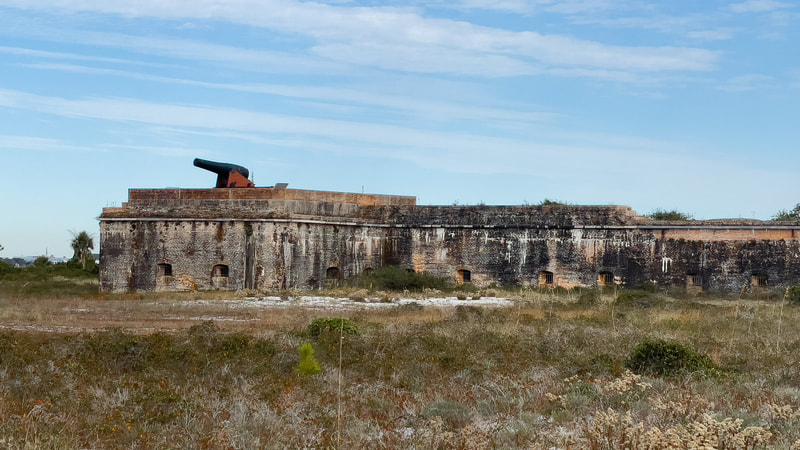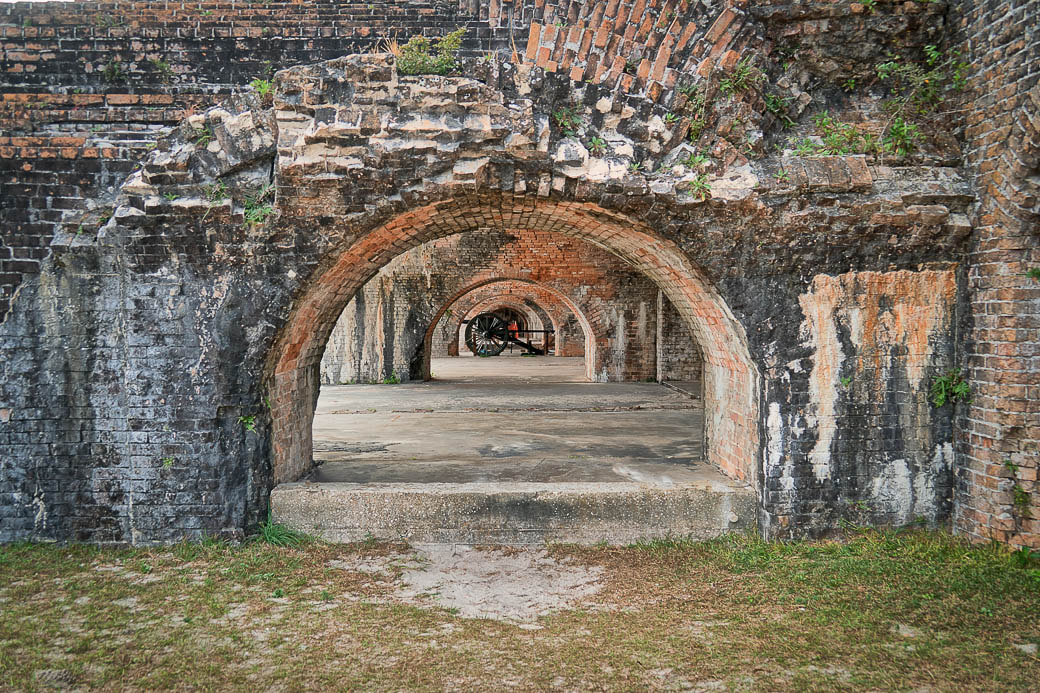Ft Pickens guarded the island and the entrance to the harbor. Its construction was supervised by Colonel William H. Chase of the Corps of Army Engineer. Using slave labor, the fort used over twenty-two million bricks and was intended to be impregnable to attack.
Personal notes & photos
We have mostly avoided traveling the coast route to get to Ft Pickens, since we always had a little pressure to get to the Scarlet Pearl in enough time for Ginger to work the tables. However, this time we recognized that this was historic and there most likely would be great photo opportunities. The coastal road was narrow and slow going, but somewhat interesting to see this part of the Panhandle. Once we arrived at the State Park, the Ranger allowed us no fee access for those who served in any military branch.
The gloomy and rather cold day added an interesting feel as we began our self-tour and realized how large this fort and surroundings were. There were catacombs, ammo storage vaults and cannons that provided a great opportunity for interesting photos. I can only imagine what it was like back then - no wifi, computers, TV, clean bathroom facilities - how good we have it today. Halfway through our self-tour, Ginger wanted to return to the car - we were not properly prepared for the chill that existed both inside and outside. Her comment "see ya ... but it's too chilly ... and don't wanna be ya". We were so glad to have added several hours to our Biloxi journey.
Photo Ops
- (maybe) beach scrub brush and small dunes en route
- Ft Pickens entrance columns
- Ft Pickens 'underground' bunkers, cannons, hallways and more
Resources:
wiki ... en.wikipedia.org/wiki/Fort_Pickens
Gulf Islands National Seashore ... www.nps.gov/guis/learn/historyculture/fort-pickens.htm
